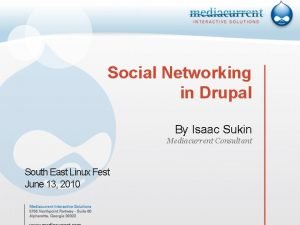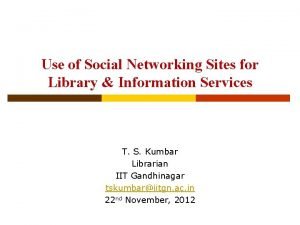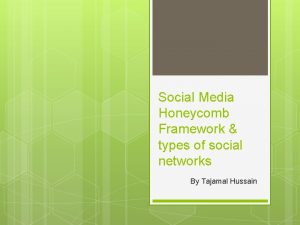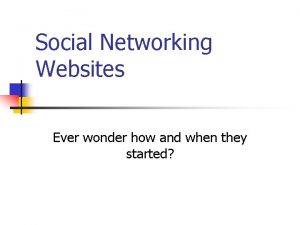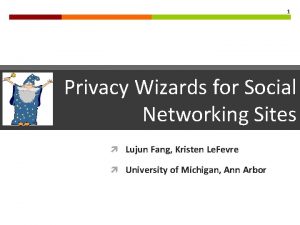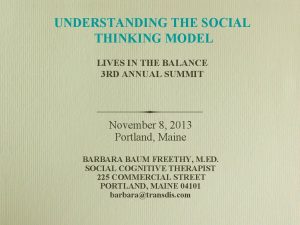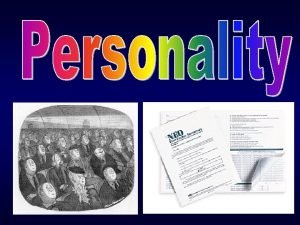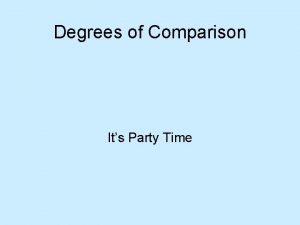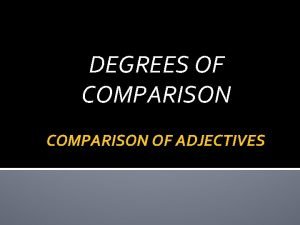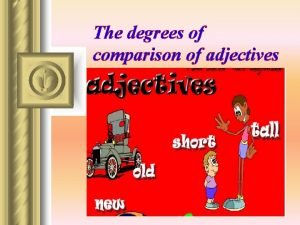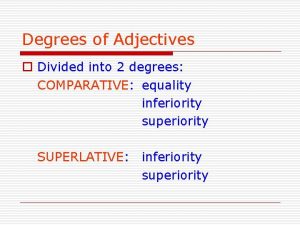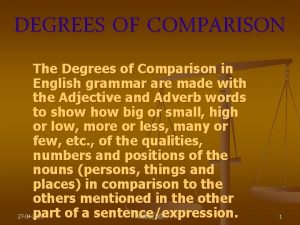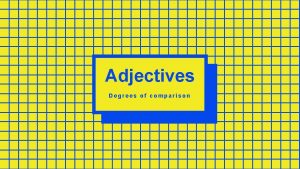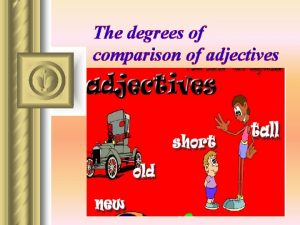Six degrees of separation Social Networking for Learning








































- Slides: 40


摘要 • 社群網站之定義, 趨勢與現象 • 社群網站發展史 • Six degrees of separation • 社群網站優勢 • Social Networking for Learning and Using research •





From Youtube • • A Brief History of Communication, 2011 https: //www. youtube. com/watch? v=r. Dkxs. Nm. KDGk The Evolution of Communication, 2011 https: //www. youtube. com/watch? v=Li. Karb. AMUjs Social Network Service, SNS, 2013 https: //www. youtube. com/watch? v=ap 4 Py. KYba. Uk How Social Networks Have Changed The World!, 2013 https: //www. youtube. com/watch? v=tr. H 4 iuebjj. I





Six Degrees of Separation • Six degrees of separation is theory that everyone and everything is six or fewer steps away, by way of introduction, from any other person in the world, so that a chain of "a friend of a friend" statements can be made to connect any two people in a maximum of six steps. • It was originally set out by Frigyes Karinthy and popularized by a play written by John Guare.

Six degrees of separation

Continued research: Small World Project • In 2003, Columbia University conducted an analogous experiment on social connectedness amongst Internet email users. • Their effort was named the Columbia Small World Project, and included 24, 163 e-mail chains, aimed at 18 targets from 13 different countries around the world. • Almost 100, 000 people registered, but only 384 (3%) reached the final target.





Social Networking for Learning • Medical students’ use of Facebook to support learning: Insights from four case studies, Medical Teacher, 2010 • Is it a tool suitable for learning? A critical review of the literature on Facebook as a technology-enhanced learning environment, JCAL, 2013 • Understanding Uses’ Attitudes toward Mobile Learning Environments, SEME 2014

Medical students’ use of Facebook to support learning: Insights from four case studies • KATHLEEN GRAY, LUCAS ANNABELL & GREGOR KENNEDY • Medical Teacher, 2010; 32: 971– 976 • Background: Recent research indicates that university students are interested and active in supporting their learning by using Facebook, a popular social networking website.

• Aim: This study aimed to add to our understanding of how or how effectively students may be using Facebook for this purpose. • Method: Researchers surveyed the extent and key features of Facebook use among 759 medical students at one university, and explored in depth the design and conduct of four Facebook study groups.

• Results: 25. 5% of students reported using Facebook for education related reasons and another 50. 0% said they were open to doing so. • The case studies showed conservative approaches in students’ efforts to support their development of medical knowledge, skills and attributes in this way. • Both technological affordances and group dynamics were factors contributing to groups’ mixed successes.

• Conclusion: These cases indicate that using Facebook as part of learning and teaching is as much of a challenge for many students as it may be for most educators.

Is it a tool suitable for learning? A critical review of the literature on Facebook as a technologyenhanced learning environment • S. Manca* & M. Ranieri† • Journal of Computer Assisted Learning, 2013 • The educational value of Facebook has not been fully determined, and results from the mainstream educational paradigms are contradictory, with some scholars emphasizing its pedagogical affordances (e. g. , widening context of learning, mixing information and learning resources) and others cautioning against its use for educational purposes.

• Moreover, systematic reviews about documented educational usage of Facebook as a learning environment are lacking. • This article attempts to provide a critical overview of current studies focusing on the use of Facebook as a technology-enhanced learning environment, with the aim of exploring the extent to which its pedagogical potential is actually translated into practice.

• The authors conducted a comprehensive literature search that identified 23 relevant articles that were subsequently analysed according to a simplified list of guidelines. These articles were further analysed and recoded through a set of emerging categories. • The results show that pedagogical affordances of Facebook have only been partially implemented and that there are still many obstacles that may prevent a full adoption of Facebook as a learning environment such as implicit institutional, teacher and student pedagogies, and cultural issues.

Understanding Uses’ Attitudes toward Mobile Learning Environments • 2014 International Conference on Social Education and Management Engineering (SEME 2014) • Liaw, S. S. , Huang, H. M. , & Hsing, K. T. • The research is to understand learners’ attitudes toward mobile learning environments that based on the Social Cognitive Theory (SCT) approach. • From the concept of SCT, personal factors can be viewed as perceived self-efficacy and self-regulation; environmental factors include perceived ease of use and interactive learning environments; and behavioral factors are perceived usefulness and perceived behavioral intention.

• A questionnaire survey is collected 159 responders after they all use mobile learning systems for one month. • After statistical analyses, perceived ease of use is the best predictor on perceived usefulness. • And self-regulation, interactive learning, and selfefficacy are all significant predictors on perceived usefulness. • Furthermore, perceived usefulness is a significant predictor on behavioral intention toward using mobile learning environments.

Self-efficacy Self-regulation Usefulness Ease of use Interactive The research model Behavioral intention


Prediction Ease of usefulness self-regulation usefulness Interactive learning usefulness self-efficacy usefulness Usefulness behavioral intention Β 0. 59 0. 27 0. 24 R 2 0. 69 0. 07 0. 03 p <0. 01 -0. 10 0. 72 0. 01 0. 52 <0. 05 <0. 01









 Facebook degrees of separation
Facebook degrees of separation Six degrees of separation game
Six degrees of separation game Six degrees of separation synopsis
Six degrees of separation synopsis Social media six degrees
Social media six degrees Three dumb routers
Three dumb routers Convert from degrees to radians 225 degrees
Convert from degrees to radians 225 degrees One half radian
One half radian Six networking objectives
Six networking objectives Drupal social network
Drupal social network Types of social networking sites
Types of social networking sites Honeycomb framework of social media
Honeycomb framework of social media Aol founded
Aol founded Social networking sites
Social networking sites Slidetodoc.com
Slidetodoc.com Cuadro comparativo e-learning b-learning m-learning
Cuadro comparativo e-learning b-learning m-learning Classify each polygon
Classify each polygon Social thinking workshops
Social thinking workshops Social thinking and social influence
Social thinking and social influence Social thinking social influence social relations
Social thinking social influence social relations Formuö
Formuö Typiska drag för en novell
Typiska drag för en novell Nationell inriktning för artificiell intelligens
Nationell inriktning för artificiell intelligens Vad står k.r.å.k.a.n för
Vad står k.r.å.k.a.n för Varför kallas perioden 1918-1939 för mellankrigstiden
Varför kallas perioden 1918-1939 för mellankrigstiden En lathund för arbete med kontinuitetshantering
En lathund för arbete med kontinuitetshantering Personalliggare bygg undantag
Personalliggare bygg undantag Tidbok yrkesförare
Tidbok yrkesförare Anatomi organ reproduksi
Anatomi organ reproduksi Vad är densitet
Vad är densitet Datorkunskap för nybörjare
Datorkunskap för nybörjare Tack för att ni lyssnade bild
Tack för att ni lyssnade bild Debattinlägg mall
Debattinlägg mall Delegerande ledarskap
Delegerande ledarskap Nyckelkompetenser för livslångt lärande
Nyckelkompetenser för livslångt lärande Påbyggnader för flakfordon
Påbyggnader för flakfordon Vätsketryck formel
Vätsketryck formel Svenskt ramverk för digital samverkan
Svenskt ramverk för digital samverkan Jag har nigit för nymånens skära
Jag har nigit för nymånens skära Presentera för publik crossboss
Presentera för publik crossboss Vad är ett minoritetsspråk
Vad är ett minoritetsspråk Bat mitza
Bat mitza








